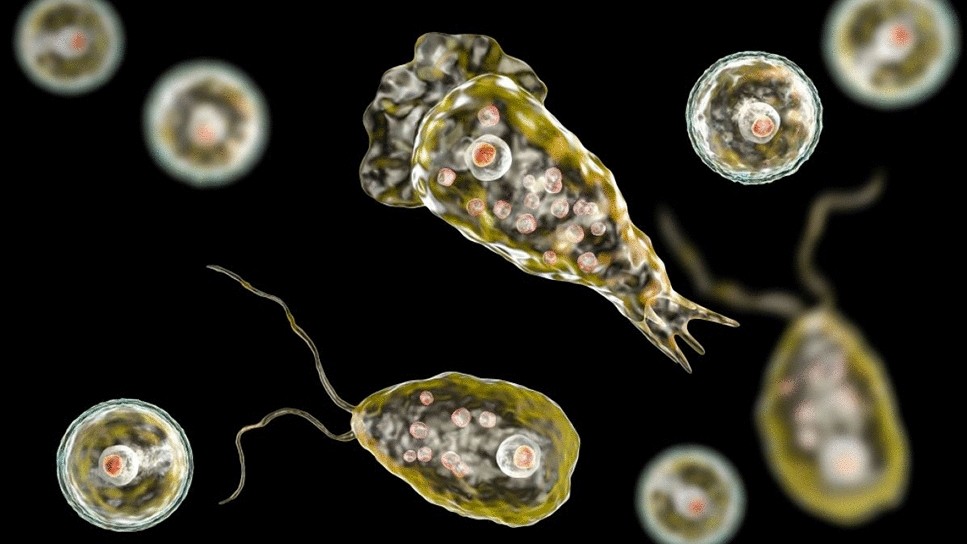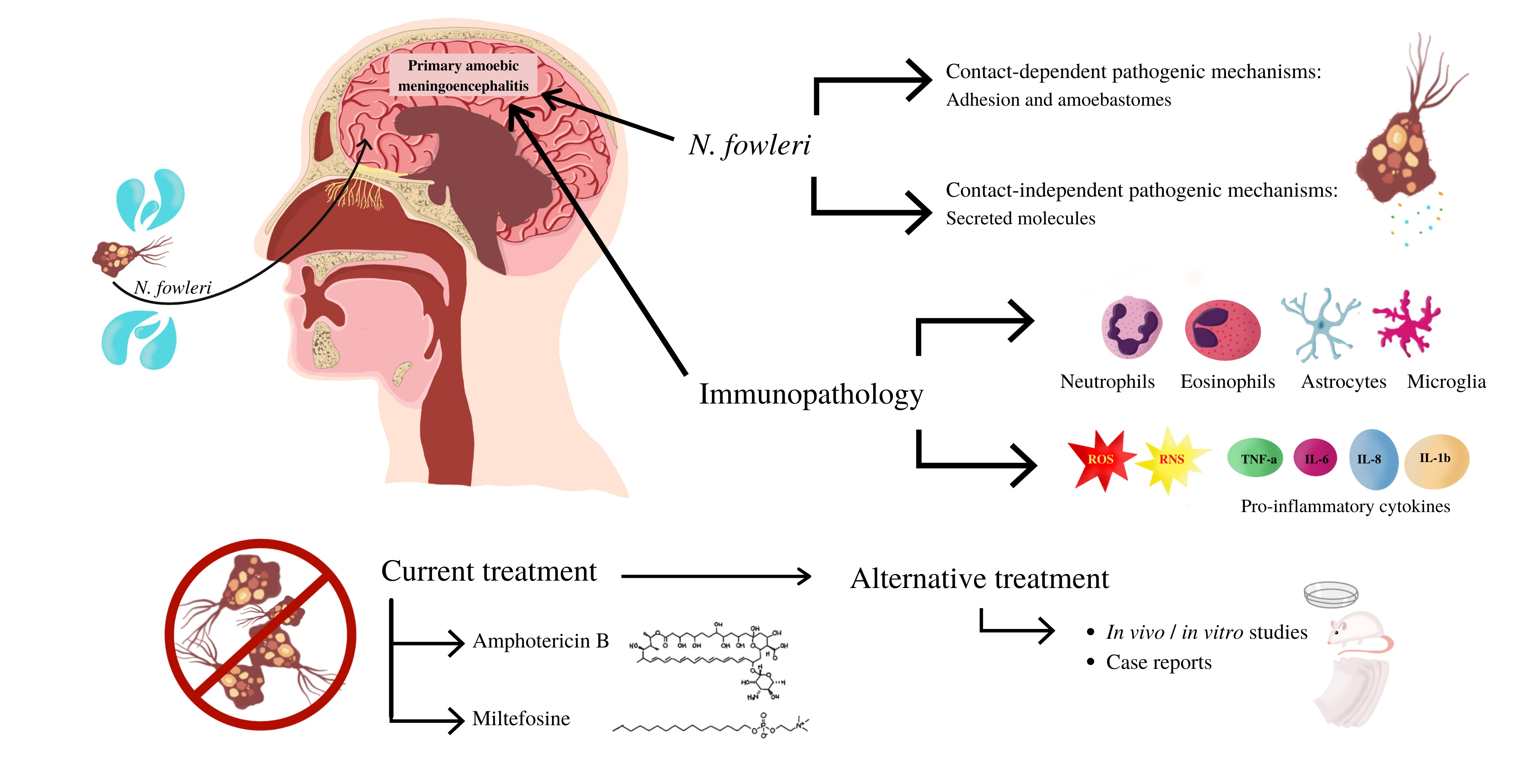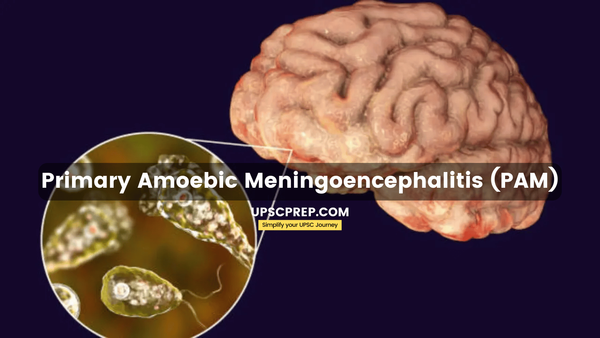Table of contents
Why in the News?
- Cases have been reported in various districts of Kerala, including Malappuram, Kannur, Kozhikode, Alappuzha, and Thrissur.
- Recent Incidents: In the last two months, three cases have been reported, including two fatalities—a five-year-old girl from Malappuram and a 13-year-old girl from Kannur. A 12-year-old boy from Kozhikode is currently undergoing treatment.
What is PAM?
Primary Amoebic Meningoencephalitis (PAM) is a rare but often fatal infection of the brain caused by the amoeba Naegleria fowleri, commonly known as the "brain-eating amoeba."
- PAM is non-communicable.
Causative Agent
- Naegleria fowleri: This is a free-living amoeba typically found in warm freshwater environments such as lakes, rivers, hot springs, and poorly maintained swimming pools.

What is an Amoeba?
- An amoeba is a type of cell or unicellular organism with the ability to alter its shape, primarily by extending and retracting pseudopods.
- Higher temperatures of up to 115°F (46°C) are conducive to its growth and it can survive for short periods in warm environments.
Mode of Infection
- Entry Point: The amoeba enters the human body through the nose, usually when people are swimming or diving in contaminated water.
- Pathway to the Brain: Once inside the nose, the amoeba travels up the olfactory nerve to the brain, where it causes severe inflammation and destruction of brain tissue.

Symptoms
- Early Symptoms (1-9 days after infection):
- Severe headache
- Fever
- Nausea and vomiting
- Later Symptoms:
- Stiff neck
- Confusion
- Loss of balance
- Seizures
- Hallucinations
- Progression: The disease progresses rapidly, often leading to death within about 5 days after the onset of symptoms.


Diagnosis
- Clinical Suspicion: Given the rarity of the disease, it is often suspected when a patient presents with symptoms of meningitis but does not respond to typical bacterial treatments.
- Laboratory Tests: Diagnosis is confirmed by detecting Naegleria fowleri in cerebrospinal fluid (CSF), biopsy, or tissue specimens.
Treatment
- Antimicrobial Therapy: Treatment typically involves a combination of drugs, including amphotericin B, rifampin, and miltefosine, among others.
- Supportive Care: Intensive supportive care in a hospital setting is crucial.
Cases of PAM are very rare, with around 381 cases identified worldwide since the disease was first recognized in 1966. There is no effective treatment, though the antifungal and antimicrobial drugs have been tried with limited success.
Prevention
- Avoiding Contaminated Water: Avoid swimming in warm freshwater bodies, especially during high temperatures.
- Nasal Protection: Use nose clips or avoid putting your head underwater in potentially contaminated water.
- Water Treatment: Ensure proper chlorination and maintenance of swimming pools and other recreational water facilities.
Environmental Factors
- Warm Water: Naegleria fowleri thrives in warm water, and its activity increases with rising temperatures.
- Stagnant and Unhygienic Water: Unhygienic and stagnant water bodies are more likely to harbor the amoeba.
Conclusion
Primary Amoebic Meningoencephalitis (PAM) is a severe and often fatal disease caused by Naegleria fowleri. Given its rapid progression and high fatality rate, early diagnosis and treatment are critical. Preventive measures, such as avoiding warm freshwater bodies and ensuring proper water hygiene, are essential to reduce the risk of infection.

